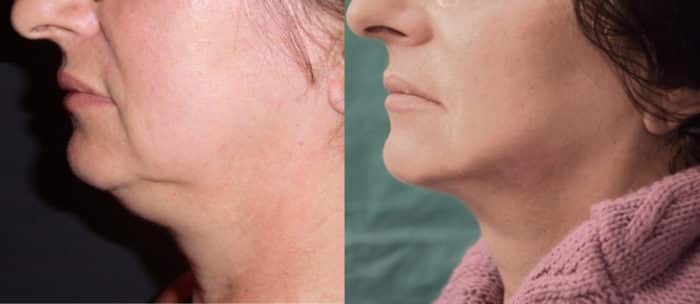Whether you’re looking to enhance your breast size or reshape them, breast implants can help you achieve the look you desire. However, as with any cosmetic procedure, it’s important to know all the facts of breast implant surgery (commonly referred to as breast augmentation) and understand if it is right for you before making a decision. As with any aesthetic procedure, it’s important for you to make your decision based on your own goals and needs, not those of others. A consultation with a board-certified plastic surgeon can help you determine whether or not you are a good candidate for breast implants.
Am I a good candidate for breast implants?
In general, most patients who seek breast implants are good candidates if they:
- Are in good physical and emotional health
- Are aware of the risks and complications associated with breast implants
- Have realistic expectations for the results of surgery
- Have strong motivations for undergoing the surgery
If you are considering breast implants, schedule a consultation with a board-certified plastic surgeon. He or she will evaluate your health and discuss your reasons and expectations for surgery to help determine whether you are a good candidate for the procedure.
Are there any reasons why I could not get breast implants?
Most individuals in good physical and mental health are good candidates for breast implants, but there are a few factors that may keep a plastic surgeon from recommending breast augmentation. These include:
- Current pregnancy or lactation
- Illness or infection
- Breast cancer or abnormal mammogram
- Unrealistic expectations regarding the outcomes of the surgery
- Smoking or vaping
If you are pregnant or breastfeeding, your plastic surgeon will recommend you wait to have breast augmentation surgery. A surgeon will want to wait and see the new natural size and shape of your breasts post-pregnancy and breastfeeding before deciding on what type of implant will be best for you.
If you have a history of breast cancer or abnormal mammogram results, speak with your doctor first before considering getting a breast augmentation. While neither of these will necessarily preclude you from getting the surgery, they are important factors to consider and your doctor will want as much information as possible.
In addition to the myriad health concerns associated with smoking, it also decreases oxygen supply and constricts blood vessels, both of which can be dangerous in regards to surgery and recovery. If you do smoke, you will be required to abstain for several weeks prior to your breast augmentation to help ensure the surgery can proceed safely.
Lastly, unrealistic expectations about the outcome of the surgery may keep your surgeon from recommending breast implants. While breast implants can dramatically alter your figure, there are limits to even a skilled surgeon’s capabilities, and any idea of “perfection” is likely not possible. Be sure to discuss your expectations with your doctor so they can provide realistic advice on the outcomes that are achievable with your current anatomy.
What are the different reasons someone would get breast implants?
Breast augmentation is a personal decision and the reasons a woman may elect to have it are wide and varied. Some of the most common reasons include:
- To achieve a more proportionate figure
- To restore volume lost after weight loss or pregnancy
- To correct a difference in breast size
- To improve self-esteem and confidence
- Clothing fit issues—particularly with swimwear and form-fitting tops
- Breast reconstruction following a mastectomy
When is the best time for breast augmentation?
The best time for breast implants is going to be unique for every individual, and there are a number of health and lifestyle factors to consider before determining when it’s right for you.
Best Age for Breast Augmentation
In general, the best age for breast augmentation is when a woman is in her 20s or 30s. This is because a woman’s breasts are typically fully developed by this age, and she is likely to have a good amount of natural breast tissue to work with. Additionally, a woman in her 20s or 30s is likely to have more skin elasticity, which can help the implants settle into place more smoothly.
However, a woman of any age in good health can be a good candidate for breast implants. Breast augmentation remains a popular choice for women in their 40s, 50s and beyond.
*Note: Silicone gel implants are only FDA-approved for use in women over the age of 22. Patients younger than 22 may still be candidates for breast implants if fat transfer or saline implants are used instead.
Before or After Children
Pregnancy and breastfeeding are also considerations for planning when to have breast implants. If you are considering pregnancy in the near future, it is best to wait until after the baby is born and you have finished breastfeeding before having augmentation surgery. This is because pregnancy and breastfeeding can cause changes to your breasts that could potentially affect how the implants will look.
However, if you are not planning on having children for several years, you may wish to have breast implants beforehand and enjoy the benefits the implants bring, and most women can safely and successfully breastfeed even with implants. Later, after you are finished having children, you may need to have revision surgery to restore the shape and size of your breasts.
Breast Reconstruction
Many women elect for breast reconstruction after a mastectomy. There are several techniques that can be used to restore your breasts, such as implants, tissue from other parts of your body, or both. Breast reconstruction can be done immediately following the mastectomy or delayed for several months or even years, depending on what is right for your unique situation.
What are the types of breast implants?
If you are a good candidate for breast implants and decide that augmentation is right for you, your plastic surgeon can help you determine which type of implant is best for your body to achieve your desired results. The primary types of breast implants are saline, silicone, and gummy bear.
Saline Implants
Saline breast implants have a silicone shell that is filled with sterile salt water. They are available in different sizes and shapes, with the most common being the round implant. Teardrop-shaped implants are also available which create a more natural look.
Pros:
- Less expensive than other types of implants
- Require a smaller incision for placement
- Less likely to leak, but if it does the saline is safely absorbed into the body
Cons:
- Can cause rippling or wrinkling of the skin
- May not feel as natural as silicone implants
- If it does rupture, it will need to be replaced immediately as the breast will be deflated
- Will likely need to be replaced after 10 years
Silicone Implants
Silicone breast implants are made of a silicone shell filled with silicone gel. They are used to increase breast size or fullness or to improve the symmetry of the breasts. They are available in different sizes and shapes.
Pros:
- Look and feel more natural than saline implants
- Less likely to cause rippling under the skin
Cons:
- Not available to patients under 22
- More expensive than saline implants
- If they rupture, you may not know about it, leading to problems with silicone leaking into the breast
- Will likely need to be replaced after 10 years
Gummy Bear Implants
Gummy bear breast implants are made of a special type of silicone gel that is more cohesive than traditional silicone gel implants. This means that they hold their shape better and are less likely to leak or rupture if there is a problem with the implant. Gummy bear implants also feel more natural than other types of breast implants.
Pros:
- Less likely to leak or rupture than other types of implants
- Retain their shape better over time
- Less likely to cause rippling or wrinkling of the skin
- Have a more natural feel than other implants
- Can last up to 20 years
Cons:
- Can be slightly more expensive than saline or traditional silicone implants
Dr. Tim R. Love of Love Plastic Surgery and Aesthetics was one of the first plastic surgeons in the country to reintroduce gummy bear implants to U.S. patients, and has remained a pioneer in techniques and procedures that produce safe, long-lasting, and natural-looking breast augmentation results.
What are the alternatives to breast implants?
If you are not deemed a good candidate for breast augmentation, or don’t feel the procedure is right for you, there are alternatives to help you achieve the body you want, such as:
Breast lift: A breast lift, also known as a mastopexy, is a surgical procedure that increases the perkiness of the breasts and improves their overall shape. It is often done in conjunction with breast implants to achieve optimal results, but can also be done without implants.
Fat grafting: Fat grafting is a process whereby fat is removed from another area of the body via liposuction and injected into the breasts to increase their size. This is often used as an alternative to implants for patients who do not want foreign objects in their body or those who are seeking a more natural look.
Beautiful Breast Implants in Oklahoma City with Dr. Tim R. Love
Board-certified by the American Board of Plastic Surgery, Dr. Tim R. Love of Love Plastic Surgery and Aesthetics in Oklahoma City has more than 30 years of experience helping women create their most beautiful bodies. He’s been a leader in innovative breast augmentation procedures for decades and specializes in the revolutionary gummy bear gel implants. Committed to delivering exceptional care and flawless results, Dr. Love remains one of the region’s premier plastic surgeons, earning awards and accolades year after year.
Find out if breast augmentation is right for you. Schedule a consultation with Dr. Love today and find out how he can help you discover your best self.








